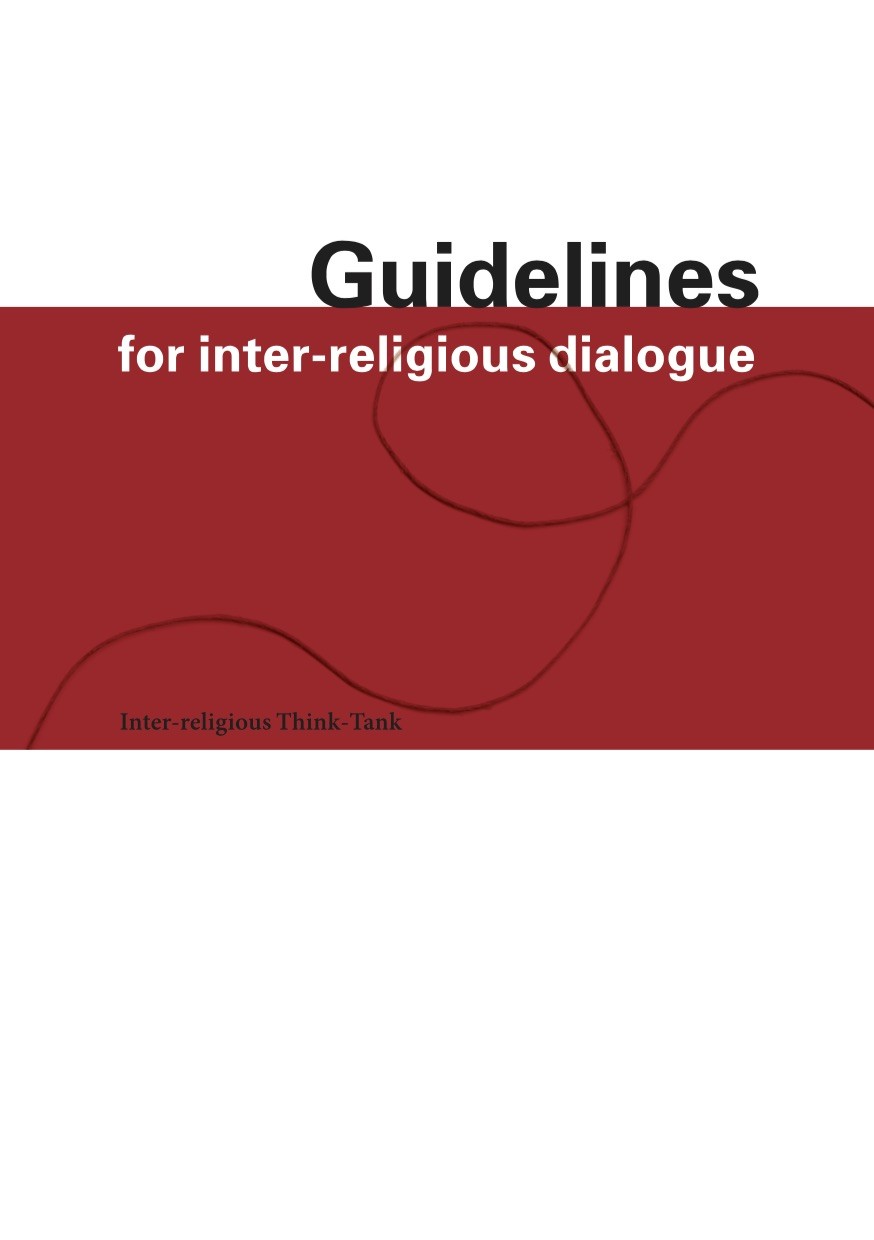
Полная версия
Guidelines for Inter-Religious Dialogue


Version 1.01, 2015-12-16
ISBN: 978-3-03805-200-5 (PDF), 978-3-03805-201-2 (ePub), 978-3-03805-202-9 (mobi/kindle)
The translation of this booklet was generously funded by the Foundation “Dialog zwischen Kirchen, Religionen und Kulturen” in Basel/Switzerland. We are also extremely appreciative of the commitment of our translators, Paul, Jennifer, and Isobel Jenkins. It is available in various E-Book formats and as an online book. You can find additional information about this Edition at: http://buchundnetz.com/werke/guidelines-for-inter-religious-dialogue/.
Copyright for the English Translation © 2015 Interreligiöser Think-Tank / Inter-religious Think-Tank, Basel (Switzerland): www.interrelthinktank.ch
The German Original was published in November 2013
© 2013 Interreligiöser Think-Tank, Basel (Switzerland)
Cover design by Schärrer & Bachmann, graphic design Basel (Switzerland)
Production and distribution by buch & netz (http://buchundnetz.com)
Contents
Introduction
Part I: Fundamental reflections 1.1 Who wants inter-religious dialogue, and why? 1.2 Who is in conversation with whom? 1.3 What is the conversation about? 1.4 What is the purpose of inter-religious dialogue? 1.5 Political conflict as a subtext 1.6 Diversity and differences within religious communities 1.7 Anxieties, and memories of insult and injury
Part II: Practical Guidelines for successful inter-religious dialogue 2.1 If a dialogue is to go well it will depend on the dialogical attitudes of the participants 2.2 Radical respect for your opposite number is fundamental 2.3 Be aware of structural asymmetry, and take measures to counteract it 2.4 Give up thinking you have the power to make or use unilateral definitions. Respect other peoples’ interpretation of what they think and do 2.5 Remember, we are all learners, and learning all the time 2.6 Seeing things from a different perspective takes practice 2.7 Learn to see ourselves as others see us 2.8 Make your own basic assumptions clear, and suspend judgement on what others may say 2.9 Respond to problems and disruptions in discussion as soon as they occur 2.10 Speak from the heart! 2.11 Remember, each language is different! 2.12 Slow down! 2.13 Recognise what you have in common, and acknowledge where you differ 2.14 Be fair! Compare like with like 2.15 Plan interfaith events in an interfaith way! 2.16 Exercise care and sensitivity in the organisation of interfaith celebrations
Check-list for the planning of interfaith events 1. What is the starting-point? 2. Organisational questions / framework 3. Questions of content 4. Conclusions and evaluation
The Authors
1
Introduction
“The end of the common world has come when it is seen only under one aspect; it exists only in the multiplicity of its perspectives.” (Hannah Arendt) [1]
Europe has always seen itself as a Christian continent. But people usually forget that there have often been periods when large minorities of Jews and Muslims lived on European soil and mutual exchange and enrichment across religious boundaries flourished. In the collective memory of the Christian majority in Europe the relationship with the other two monotheistic religious communities is remembered as one always characterised by enmity and hatred. That false perception has had terrible results.
Lesen Sie weiter in der vollständigen Ausgabe!
Lesen Sie weiter in der vollständigen Ausgabe!
Lesen Sie weiter in der vollständigen Ausgabe!
Lesen Sie weiter in der vollständigen Ausgabe!

